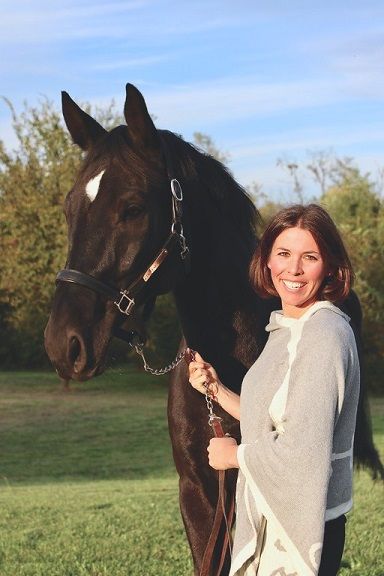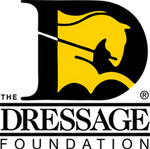
Photo credit: Red Pony Photography
Attending programs such as the USDF Instructor/Trainer Certification are a big time and financial commitment. Participating requires many days away from the farm and weekends unable to compete or teach during the summer, so why would anyone want to spend the time and money to do it, especially someone who already has an established client base? I feel strongly that there isn’t anything negative about investing in oneself. Past experiences with USDF educational programs had a big impact on me, so with support from the Maryal and Charlie Barnett Continuing Education Grant from The Dressage Foundation, I committed to participating in the Instructor/Trainer Program and to continuing my education.
The USDF Instructor/Trainer Certification program is organized into a series of workshops, a pre-certification, and then the actual certification. The workshops are meant to be informational weekends to prepare participants for the certification portion and are organized into three different sections: training, teaching, and lunging/lunge line lessons. I have thus far attended two workshops: Riding/Training with Dolly Hannon and Teaching with Sarah Geikie. Here are some of the gems that I have taken away from the workshops.
Safety first.
It has always been one of my goals that riding and teaching should be fun, educational, and safe for the horse and rider. Both workshops specifically addressed safety-- solidifying how important it is to not become complacent about it. No one is having fun or learning if they’re not feeling safe. Safety goes beyond having a properly fitted helmet and equipment; it includes having a safe environment, a suitable horse for the rider, knowledge of how to resolve problems, and a plan in place for emergency situations.
Have a plan (but be willing to edit it).
With both training and teaching it’s very important to have a plan and we talked a lot about how to go about developing a good, solid plan. We looked at a developing a plan in terms of:
What? – Observe what is happening , what is the primary issue?
Why? – Analyze why is this happening and use the pyramid of training as a rubric.
How? – How can we address what is happening and then develop a plan using specific exercises to address the issues.
As we learned during several of the riding and teaching sessions, plans need to be in pencil, sometimes even the best laid out plan might not be suitable or effective, and continuing with it will just create frustration or misunderstanding for the horse or rider.
The Pyramid of Training is your GPS.
You wouldn’t drive across the country without a GPS or map and you shouldn’t approach training or teaching without some type of road map, either. That being said, if you don’t have the Pyramid of Training hanging on the wall of your arena or set as the wallpaper on your cellphone the time is now to make it a daily visual for yourself and for your students. The Pyramid of Training was discussed in every single training and teaching session—that was 27 sessions over two workshops. This is a big deal, folks.
Be humble, be confident.
It is a blessing each and every day we’re able to work with these incredible animals that allow us to do so much with them. I think it’s important to approach these workshops with a willingness to be open and receptive to learning, leaving any ego at the door. I also think it’s important to approach them with confidence, to be commanding in the arena but to also be approachable and kind, to maintain belief in your system and be willing to change your plan when it isn’t working. It is difficult and intimidating to put yourself out there in front of a bunch of strangers and teach a lesson to someone you’ve never watched ride before, or to ride a horse you’ve never seen move and then be publicly evaluated on it. I strongly believe that most anything worth doing isn’t easy, and although putting yourself out there isn’t for the faint of heart it has been totally worth it—not just for myself, but for the benefits that it brings to my horses, students, and the greater dressage community.
Programs such as the USDF Instructor/Trainer Certification take many hours to organize and make happen. It takes a small army of volunteers and several really committed people to pull them off and I think it’s important to support these programs if we want to continue to have access to quality instruction and training on our home turf. Attending the workshops, even as an auditor, can be beneficial and inspiring to anyone who is committed to being a student of dressage. Thank you to The Dressage Foundation and Maryal and Charlie Barnett for your commitment to supporting the dressage community. I look forward to completing the program and am thankful for your support in helping to make that happen.

Photo credit: Red Pony Photography
